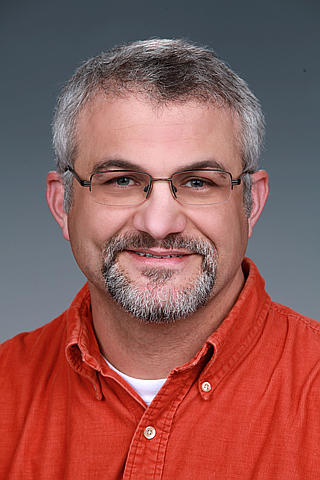From the User Executive Committee Chair
Published: 15 June 2017
The User Executive Committee (UEC) is eager to hear from you. This is the first in what will be a quarterly message from the UEC Chair.

Just a moment ago, I was trying to find some data from the Two-Column Aerosol Project (TCAP). This was an ARM Mobile Facility and ARM Aerial Facility campaign I led from July 1, 2012, to June 30, 2013. Here’s the thing—I didn’t find the data on the first try.
This is not to criticize the Data Discovery tool. The ARM Data Center collects and archives approximately 20 terabytes of data per month. In late December 2016, ARM reached a milestone of 1 petabyte (PB) of archived data. To put that in perspective, a single day of surface meteorological data from the ARM Eastern North Atlantic atmospheric observatory is about 250 kilobytes. To accumulate 1 PB of that datastream (much like a weather station would collect) would take 10 million years. Radar spectral data accumulates more quickly, so it won’t take ARM long to collect its second PB of data.
When you are searching Data Discovery, you are browsing about 10,000 continuous datastreams and more than 1,400 principal investigator (PI)-contributed and field campaign data products. The folks at the ARM Data Center are constantly working hard to ensure that users can find the data they are looking for quickly and easily.
This is all to say that the ARM Facility has a lot of data, and even seasoned ARM users—as I like to think of myself—can sometimes run into problems.
What would you do in a similar situation? Or what if you have an idea or a need that you would like to see the ARM Facility implement?
Go Here for Answers
When I couldn’t find the data I was looking for, I reached out to the ARM Data Center. You can do that a couple of different ways. The easiest is to click on “Feedback” at the top of the Data Discovery page. If you are on the www.arm.gov site, just click on “Data Questions” in the footer. Either way, you’ll be directly reaching the ARM staff members who can best answer your question.
Have a more general question about ARM? Click on “Ask Us” in the footer of the www.arm.gov website. Know a staff person you want to contact? You can find them under “Organization” in the footer. In this case, the ARM Data Center shows up in the bar on the right and I was able to directly reach out to Giri Prakash, the ARM Data Services and Archive Manager and he and his team were able to help me get the data that I needed.
Change Starts with Users
Users who have an idea or identified a need that they would like to see the ARM Facility implement can effect change within the Facility, particularly around Data Products, Instruments, Field Campaigns, and the ARM/ASR PI Meeting.
Because ARM strives to serve the largest number of people, user requests for change are most effective if you can first get the buy-in and support of a larger group of facility users. ARM prioritizes new needs identified by the Facility’s user community.
Constituent Groups
Requests for change can happen in many ways. While I’m a little partial to the User Executive Committee—and strongly encourage you to reach out to me or any member of the UEC—you can start by communicating ideas to the most appropriate ARM advisory or support group and working with them to develop the idea to positively impact the largest number of users.
- User Executive Committee
- ARM-ASR Coordination Team, formerly known as SISC
- Radar Science and Operations Group
- Aerosol Measurement and Science Group
- Unmanned Aerial System Advisory Panel
- Atmospheric Modeling Advisory Group
- Implementation Strategy Team
Science Groups
Recommendations for changes to the ARM Facility often come directly from external science meetings in the form of:
- Workshop reports
- White papers
- Science priorities of partner organizations, such as the national laboratories or Atmospheric System Research working groups
ARM Staff
Often the best thing to do is reach out to an ARM staff member. ARM consciously manages the change process, and the coordination of new tasks within the ARM Facility is led by Engineering and Process Manager Jennifer Comstock. You can find ARM priorities here.
Instrument mentors often work on the integration of new instruments and the implementation of new datastreams. Mike Ritsche leads the process for bringing new instruments into the Facility.
Translators work with the scientific community to develop value-added products, or VAPs, from the direct output of ARM instruments. Laura Riihimaki is the lead translator.
I’ve already mentioned working with Giri Prakash and the ARM Data Center. Data services, ranging from computing resources to resources for reading, writing, displaying, and manipulating ARM data are available through the Data Center.
LASSO—the LES ARM Symbiotic Simulation and Observation workflow—is laying the groundwork to produce routine large-eddy simulation (LES) modeling at the ARM Southern Great Plains (SGP) atmospheric observatory. Community input is being sought by LASSO Principal Investigator William Gustafson.
I hope this gives you the information you need when you have a question or idea related to any aspect of the ARM Facility. Again, I and the other members of the UEC want to hear from you. We are the official voice of the user community in its interactions with ARM management, and we want to represent you. You can reach me here.
Larry Berg
The ARM Climate Research Facility is a DOE Office of Science user facility. The ARM Facility is operated by nine DOE national laboratories, including .
Keep up with the Atmospheric Observer
Updates on ARM news, events, and opportunities delivered to your inbox
ARM User Profile
ARM welcomes users from all institutions and nations. A free ARM user account is needed to access ARM data.


















